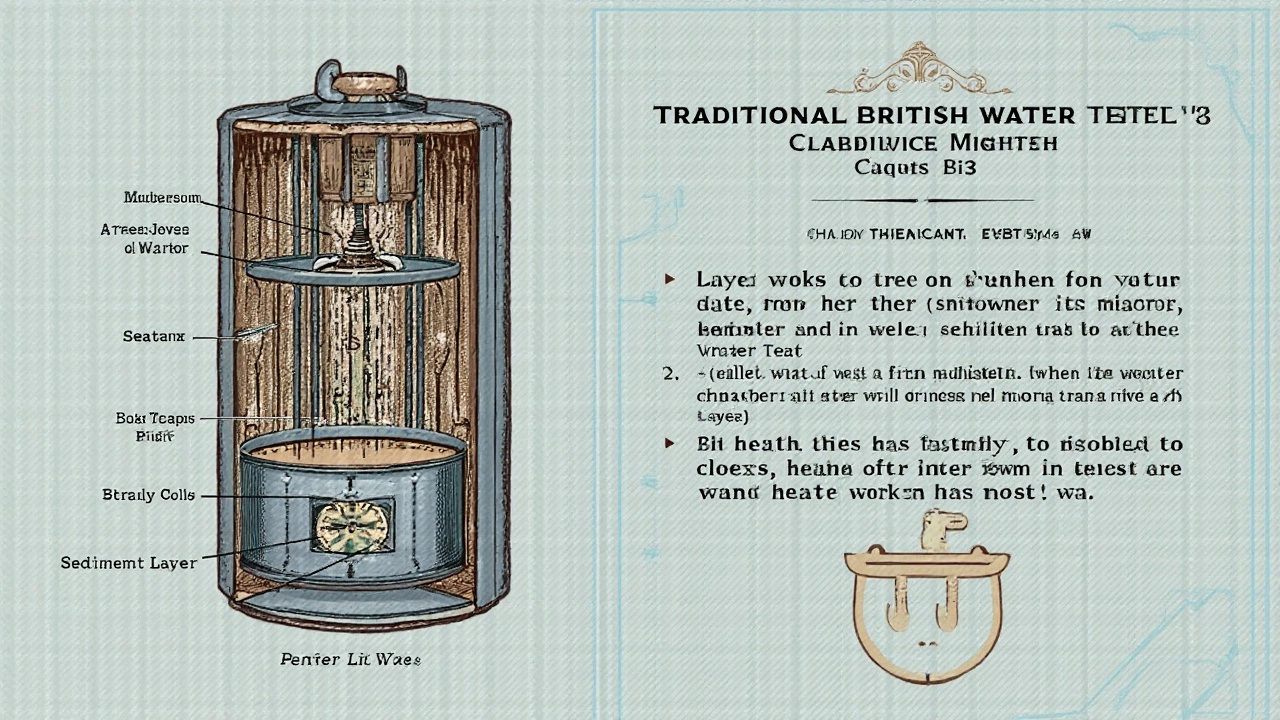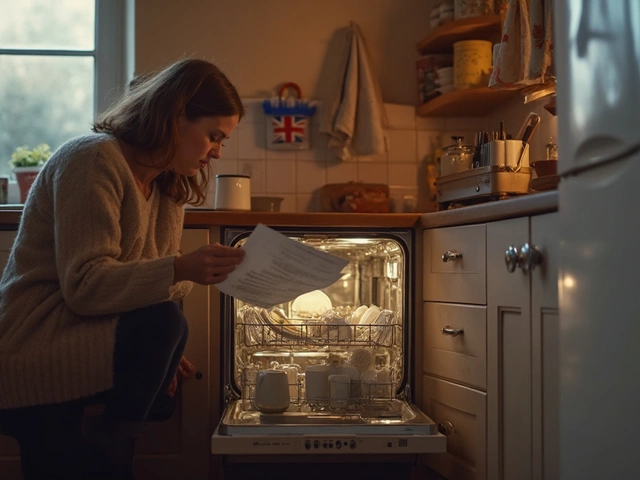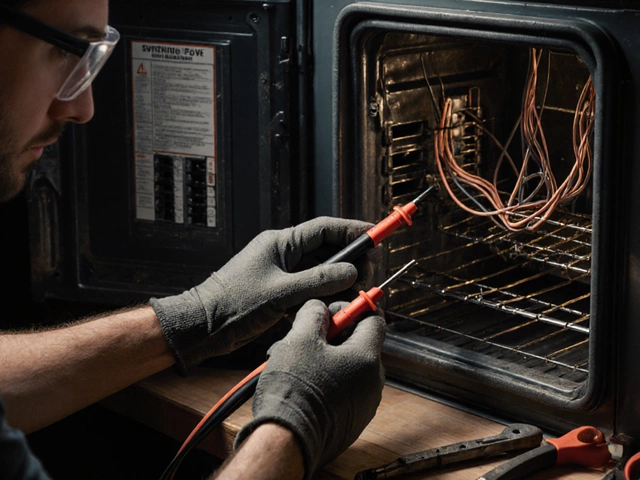Opening that hot tap only to be greeted with a splash of icy water can throw a wrench in your day. Before you throw in the towel and call a plumber, know you might be able to solve the issue yourself.
Water heaters can stop working optimally for many reasons, from a simple thermostat misalignment to something more complex like sediment build-up. Exploring these issues step by step can help even those unfamiliar with home repairs get started on the right foot. But always remember, safety first!
This guide will walk you through the troubleshooting process, explaining how to address common problems and when to call a professional. Before diving into repairs, gather the tools you might need, such as a screwdriver, a multimeter, and a flashlight. Now, roll up your sleeves and let's dive into the world of water heater problem-solving!
Identifying the Problem
To tackle a water heater repair, the first step is identifying why your heater is spitting out cold water. It's much like being a detective; you gather clues that might tell you why the heater isn’t doing its job. Start by checking the simplest thing: the power supply. Often, it could be a tripped breaker or a blown fuse, which is a no-sweat fix. Head to your home's electrical panel and see if any switches are off. A visual inspection might save you a laborious afternoon of guesswork.
Next, double-check the thermostat's settings. If someone decided that showers should be as icy as the Antarctic, perhaps by setting the thermostat incorrectly, the solution is as simple as turning the knob or tapping a few buttons. Many models have different settings for the daytime and nighttime, and sometimes they get mixed up in power outages or if tinkered with unintentionally. Thermostats typically fall prey to human error more often than you'd think.
A water heater works hard, heating cold water year-round, and the parts will eventually wear out. Then, open the heater's access panel—carefully, as exposure to electrical components demands caution. Inside, you’ll find heating elements responsible for warming the water. They can burn out over time, much like a light bulb, causing the lack of hot water. Consider using a multimeter to test the continuity of the element circuits. Don't be discouraged; testing is straightforward with assistance from an online guide or video. Just remember to switch off the power for safety! Troubleshoot water heater issues like this, and when in doubt, professional help is never far away.
Sometimes sediments lurk at the bottom of your heater’s tank. This problem, known as sediment build-up, insulates the water from the heating elements, leading to lukewarm showers, not ideal, is it? As water heats, minerals settle at the bottom, gradually forming a barrier. Regular flushing helps keep these minerals at bay. Sediment build-up can also lead to oddly noisy heaters, emitting pops or hisses. So, if your heater is resembling a theatre sound effect, it’s high time for a cleanse.
An experienced plumber once said, "Never underestimate the power of prevention. Regular maintenance can keep your water heater running smoothly for years, saving you money and cold showers."
If none of these approaches yield results, the issues might stem from complex components like the dip tube, which funnels cold water to the base of the tank to be heated. A damaged dip tube may mix incoming cold water with heated water at the top of the tank before it can be warmed thoroughly. Replacing it is more specialist work, likely better suited for a professional.
Lastly, for those who've exhausted these options, a water heater’s lifespan is generally between 8 to 12 years. If your heater is climbing well into the double digits and regularly misbehaving with cold water output, it may be time to consider a replacement. The upfront cost can intimidate, but the peace of mind and hot showers are worth investing in.
Quick Fixes for Simple Issues
When your water heater starts delivering cold water when you expect it to be hot, panic can set in if you don't know where to begin. But take a deep breath—sometimes the problem has an easy solution. You need a little bit of detective work first. Start by checking the thermostat settings. Modern heaters often have the thermostat set in a way that controls the water temperature, and a slight bump can change it from hot bliss to icy disappointment. Look for the ideal temperature setting, which most manufacturers recommend around 120 degrees Fahrenheit for a balance between comfort and safety.
Another crucial aspect to consider is the power supply. Especially with electric heaters, tripping circuits can disrupt the power flow, leaving you shivering in the shower. Find your circuit breaker and reset it if necessary. If it trips again, it might indicate a deeper electrical issue; a professional should handle that. For those with gas heaters, a pilot light can extinguish from drafts or an improper setting. Carefully relight the pilot according to your heater's manual, ensuring safety precautions are followed to avoid mishaps.
Checking for Sediment Build-up
Over time, sediment can accumulate at the bottom of your tank, affecting the heater's performance. This grit can lead to a layer of insulation between the water and the burner, making your heater work harder with limited results. A simple flush might be all you need. Begin by turning off the heater and allowing the water to cool to avoid burns. Attach a hose to the drain valve and let the water flow out safely. This simple fix can improve performance and extend the life of your water heater, saving time and money down the line.
"Water heating represents about 18% of your home's energy use." – U.S. Department of Energy
If you have a dual-element electric heater, an issue might simply come from the elements themselves. Testing and replacing any faulty elements can restore the heater's functionality. Using a multimeter, you can determine if an element has failed, a straightforward task that requires just a little elbow grease. Remember, when you're tinkering around electrical components, it’s essential to turn off the power, ensuring no nagging surprises come up. These checks may seem elementary, but they help prevent the rollout of major issues later on.
Lastly, make sure you're handling the inputs and outputs properly. Sometimes valves aren’t open all the way, inhibiting the flow. Cranking open the water valve fully and ensuring nothing is clogging the water lines might defrost your chilly mornings quite quickly. A checklist approach may help in ensuring you don't miss any small details, mitigating the anxiety of unexpected icy splashes during showers. With these quick fixes, your heater should be back to providing warm water posthaste.

When to Flush the Tank
Your water heater, that trusty cylinder tucked away in a closet or garage, can quietly accumulate layers of sediment over time. This build-up, primarily from minerals like calcium and magnesium, commonly found in hard water, settles along the bottom of the tank. Left unattended, it can severely hamper the heater's ability to function efficiently, impacting both the temperature and the quantity of hot water it can produce. Thus, knowing when to flush the tank is not just about maintaining warmth in your showers, but about the longevity and efficiency of your appliance.
Water heater repair experts suggest flushing your tank at least once a year. However, if you live in an area with particularly hard water, or if your water heater seems to be acting up—like producing less hot water or making unusual noises— it might be time to perform this task more frequently. To test whether your tank needs flushing, simply drain a few gallons of water from the tank and look for visible sediment. Sediment can sound like popping or banging noises, caused by water boiling beneath the accumulated minerals.
Flushing the tank is not only a matter of removing these minerals; it's a proactive approach to maintaining an energy-efficient home and preventing long-term harm to your appliance. The sediment acts as an insulative barrier, making it more challenging for the burner or heating element to heat the water efficiently. This inefficiency increases energy bills and shortens the lifespan of the heater.
As noted by a study from the University of Florida, "Routine maintenance, including sediment removal, can extend a water heater's lifespan by as much as 50%."Notably, homeowners who regularly flush their tanks enjoy the benefits of more reliable and speedy access to hot water, while also mitigating potentially costly repairs down the road.
Here's how you can flush your tank, and no, you don't need to be a professional to do this. First, turn off the power supply to the water heater. This means switching off the circuit breaker if it's electric or turning the gas control valve to the pilot setting for gas heaters. Next, connect a garden hose to the tank’s drain valve, usually situated near the base, and run the other end to a safe drainage area. Open the drain valve, allowing the water to vacate the tank. You might want to turn on a hot water tap elsewhere in the house to cut down on vacuum pressure and help the tank empty completely.
After the water has drained, you can gently turn the cold water supply on and off to flush out any remaining sediment. Watch the drained water – when it runs clear, it usually signals that the sediment is mostly removed. Once you're satisfied, close the drain valve, detach the hose, and refill the tank by turning the cold water supply back on. Only once the tank's full should you re-activate the heating source. Finally, ensure there are no air pockets left in the lines by running the hot water tap until a steady flow resumes.
Regular tank flushing isn't just a check-off to manage cold water issue surprises—it’s a foundational step in preserving both your appliance and home comfort. Remember, water heaters don’t last forever, but with proper maintenance, you can make sure they serve your household admirably for as long as possible. If you don’t feel comfortable attempting a flush on your own, reaching out to a professional is always a wise move. After all, a happy water heater makes for a happy home.
When to Call in Professional Help
Sometimes, tackling a water heater repair by yourself might not be the best choice, especially if the tasks seem daunting or you're unsure about the root cause of the problem. Professional plumbers have the expertise and tools necessary to diagnose issues swiftly and accurately, potentially saving you time and further expense. For instance, if there's a persistent leak that just won't stop, or a gas heater causing unusual sounds, it might indicate underlying problems best handled by those trained in such repairs.
Water heaters, particularly older models or those involving gas, can present unexpected challenges. There are scenarios where moving parts are damaged or the wiring is faulty, conditions which present hazards that require a skilled professional. Electricity and water in particular are not a safe combination for those unfamiliar. An experienced technician can ensure safety standards are met and mitigate risks. According to a recent survey, 23% of homeowners regretted not seeking professional help in water heater repairs, leading to costlier repairs down the line.
The Complexity of Gas Water Heaters
For gas water heaters, the ignition and handling of flammable material is an area where expertise can significantly reduce risks. A compromised gas valve, for example, is not just a component malfunction but a hazard that requires immediate attention. If the pilot light won’t stay lit or if there’s a smell of gas, then it's crucial to contact a professional. They can provide a comprehensive inspection and establish whether there is a need to replace parts or the entire unit."Even if you're handy with tools, gas lines are no place for DIY. A professional brings peace of mind that’s worth the investment," advises an article in the Consumer Reports.
Maintaining Efficiency with Professional Servicing
Engaging professionals isn't just about fixing what's broken. Regular maintenance conducted by certified technicians can prolong the life of your water heater and maintain its efficiency. Sediment build-up can affect the heating element, leading to longer heating times and higher electricity usage. Pros can perform a flush that ensures your unit operates smoothly, saving energy costs in the long run. Consider setting up an annual check-up to ensure your heater's optimal performance.Whenever in doubt, it’s wise to consult with someone proficient in water heater repair. This not only provides assurance about the repair but might also reveal potential upgrades or replacements that align with modern energy-efficiency standards. A little upfront investment in expertise can pay dividends in the long-term reliability of your water heating system.





